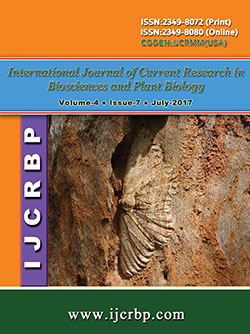 |
Online ISSN : 2349-8080 Issues : 12 per year Publisher : Excellent Publishers Email : editorinchiefijcrbp@gmail.com |
2The Biome, 157, M.B. Road, Birati, North 24 Parganas, Kolkata-700 051, West Bengal, India
3Amplicon Biosciences, 10B Girish Avenue, Kolkata-700 003, West Bengal, India
In order to investigate the cytological effects of methanolic extracts of three commonly known medicinal plants: Catharanthus roseus (L.) G.Don, Phyllanthus reticulatus Poir. and Bacopa monnieri(L.)Pennell was evaluated using Allium cepa L. assay followed by computational analysis through molecular docking. The study was extended to elucidate the interactions of the major active principles of the extracts with possible cellular targets such as histones; in cases where chromatin disruption was exhibited as direct effect of treatment. Wet lab experiments were performed prior to the computational analysis. Comparative modelling using modeller v.9.18 was used to obtain the 3D structures of histones and protein ligand interactions were studied using PATCHDOCK server and validated using AUTODOCK. Small molecule structures were obtained from PUBCHEM and were converted to 3D using OPENBABEL. The docked complexes were then subjected to analysis using PDBSUM to obtain the specific interaction sites. Meta-analysis was performed using VENNY v.2.0. Results indicate that most of the crude extracts exerted mitotic arrest at prophase while some chromatoclasic and mitoclasic aberrations were noted. Computational studies revealed that most of the active constituents had unique binding sites with histones. This observation indicates that histone-small molecule interactions might play a role in formation of aberrant cytological phenotypes.
